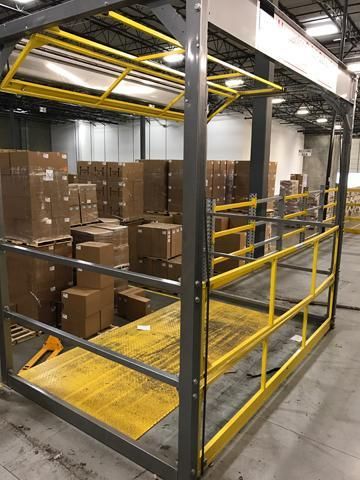
5 Responses When Management Says No to Safety
Ensuring safety for all employees is one of the most important tasks for any facility manager. Many facility managers pride themselves on having zero accidents or incidents and take regular steps to make sure all workers are safe. A zero incident record often means that safety equipment is in place and being used properly.
However, as applications and facilities change, there is often a need to procure additional safety equipment. Many times upper management is much more focused on ensuring operations are as efficient as possible and profits are as high as they can be. Safety devices can often carry high costs, and it is not always easy to make the case for the equipment needed to ensure safety at all times.
We’ve heard many ways that executives have pushed back on safety managers about their spending, and have put together five responses that can help to sell your executive team on the purchase of the right safety equipment for your facility.
We don't need it - the work platform is not very high.
While three feet doesn’t seem high, a fall from that level can produce a sprain, break or some other injury. ANSI standards mandate that fall protection should be in place for all workers that work at heights of three feet or greater - OSHA takes it a foot higher to four feet. But, all it takes is one incident, which can lead to lost work days for employees and costs for the company. Even without an incident, fines from OSHA may be implemented for improper safety equipment. Fall protection equipment also provides employees working on elevated platforms confidence and ease of mind, so they can focus on doing their job.
We have a chain or other movable barrier; it’s working fine.
This thought process is very high risk - barriers like chains or movable guarding are often never moved into place, leaving employees working at exposed elevated ledges. These “safety devices” also do not meet code, and don’t provide the level of safety needed for employees working at height. ANSI fall protection guidelines mandate a barrier is in place at all times, even while pallets are staged, being picked or in the process of being delivered or removed. The best solution to meet these needs is a dual-gate system, which provides protection from elevated ledges and keeps employees from pallet drop areas when they are in use without having to move full systems into and out of place.
The safety equipment is too expensive.
While the initial cost of safety equipment can be high, depending on the complexity of the facility and the number of areas that need to be secured, the cost of not having the safety equipment in place is much greater. If there is an incident, costs can add up - OSHA fines, potential for the facility to be shut down for a period of time can be daunting. Additional costs for legal teams and even to rebuild the corporate reputation after incident can also accrue. These potential costs outweigh any cost for safety equipment.
The safety equipment will impede production.
As long as you choose the right safety equipment for your specific application, productivity should stay intact, and may even improve. For example, dual-gate safety systems like the ones we offer can include power operation, wireless controls and sensors, and even can be integrated with software. It’s pretty easy to debunk this one, and if you need more evidence, we can provide many case studies on productivity.
We’ve never had an incident using what is in place now.
Congratulations, you’ve been relying on luck in the past and it’s worked. What happens when the luck runs out? This too is a high risk strategy, and luck is just not something to rely on when it comes to employee safety.
Have you heard another excuse for not purchasing the safety equipment you need to get to zero incident status? We’re happy to help you find the right response and equipment - just reach out.